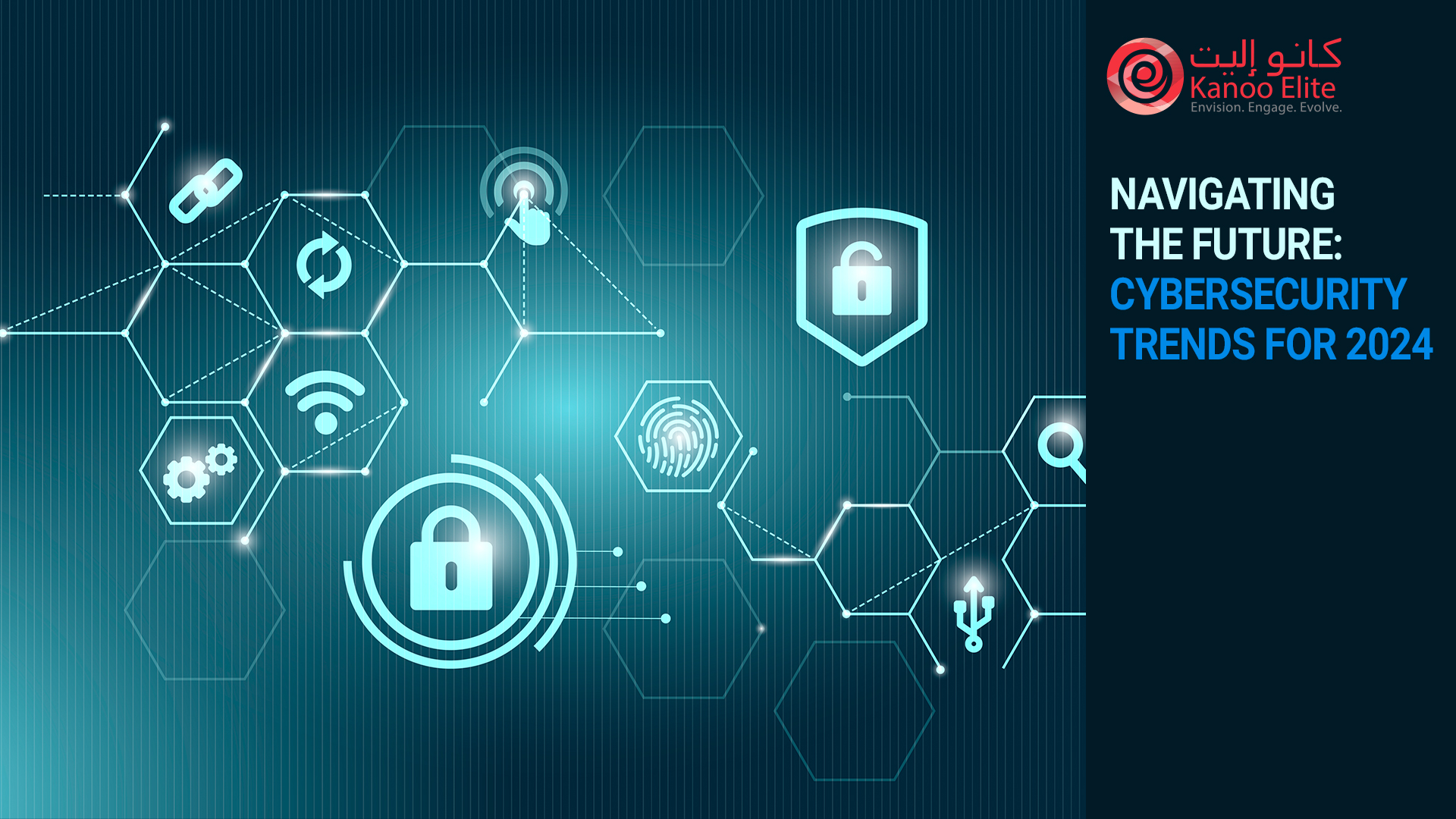In an ever-evolving digital landscape, staying ahead of the curve in cybersecurity is not just a necessity but a strategic imperative. As we approach 2024, the cyber threat landscape continues to grow in complexity, presenting new challenges and opportunities for organizations and individuals alike. In this blog, we’ll delve into the emerging cybersecurity trends that are poised to shape the way we defend against cyber threats in the coming year.
Artificial Intelligence and Machine Learning in Cybersecurity
Artificial intelligence (AI) and machine learning (ML) have been instrumental in enhancing cybersecurity capabilities, and this trend is only set to intensify in 2024. These technologies enable proactive threat detection, rapid incident response, and the ability to adapt to evolving attack vectors. AI-driven security tools can analyze vast amounts of data to identify patterns and anomalies, providing a more sophisticated defense against sophisticated cyber threats.
However, as AI and ML become more integrated into cybersecurity strategies, so does the risk of adversarial attacks. Hackers are increasingly leveraging AI to create more convincing phishing attacks, deepfakes, and even to exploit vulnerabilities in AI systems themselves. Cybersecurity professionals will need to stay vigilant and employ advanced AI-driven solutions to protect against both traditional and AI-enabled threats.
Quantum Computing and Post-Quantum Cryptography
As the era of quantum computing dawns, the cryptographic algorithms that currently secure our digital communications face the risk of being rendered obsolete. Quantum computers have the potential to break widely-used encryption methods, posing a significant threat to data confidentiality. In response, the cybersecurity community is actively exploring and developing post-quantum cryptographic algorithms that can withstand the computing power of quantum machines.
In 2024, organizations will need to assess their cryptographic infrastructure and transition to quantum-resistant algorithms to future-proof their sensitive data. This transition is complex and requires careful planning, as it involves updating protocols, certificates, and ensuring compatibility with existing systems.
Zero Trust Architecture
The traditional network security model, based on the assumption that threats exist only outside the network, is no longer sufficient in today’s dynamic and distributed computing environments. Zero Trust Architecture (ZTA) is gaining prominence as a cybersecurity paradigm that assumes no implicit trust, even within the network perimeter. Every user, device, and application is treated as potentially compromised, and strict access controls are enforced.
In 2024, the adoption of Zero Trust principles will continue to rise as organizations recognize the importance of securing their assets in an interconnected and remote working landscape. Implementing ZTA requires a shift in mindset, robust identity and access management, and continuous monitoring to detect and respond to anomalies in real-time.
Cloud Security Maturity
The accelerated migration to cloud-based infrastructures brings forth new challenges in securing data and applications. In 2024, organizations will focus on enhancing their cloud security posture, ensuring that data stored in the cloud is adequately protected. This involves implementing robust encryption, leveraging cloud-native security tools, and enforcing access controls.
As multi-cloud and hybrid cloud environments become the norm, organizations will also emphasize interoperability and standardized security policies across different cloud platforms. Continuous monitoring, threat intelligence sharing, and a proactive approach to cloud security will be integral components of a comprehensive cybersecurity strategy.
Rise of Extended Detection and Response (XDR)
Extended Detection and Response (XDR) is an integrated cybersecurity platform that correlates data from various security products to provide a more comprehensive view of potential threats. In 2024, XDR solutions will gain further traction as organizations seek to streamline their security operations, improve incident response times, and enhance overall threat visibility.
XDR goes beyond traditional endpoint detection and response (EDR) solutions, incorporating data from networks, clouds, and other security tools. This holistic approach enables security teams to connect the dots between disparate events and proactively defend against sophisticated threats.
Emphasis on Cybersecurity Training and Awareness
As cyber threats become more sophisticated, human error remains a significant factor in security breaches. In 2024, organizations will invest more in cybersecurity training and awareness programs to empower their workforce with the knowledge and skills needed to recognize and thwart cyber threats.
Phishing attacks, social engineering, and other forms of manipulation will continue to target employees, making it crucial for organizations to foster a culture of cybersecurity awareness. This includes regular training sessions, simulated phishing exercises, and clear communication of security policies and best practices.
Regulatory Compliance and Privacy Concerns
The regulatory landscape around cybersecurity is evolving, with an increasing focus on data privacy and protection. In 2024, organizations will face stricter regulations and compliance requirements, necessitating a proactive approach to cybersecurity. Compliance with frameworks such as GDPR, CCPA, and other regional data protection laws will be a priority to avoid hefty fines and reputational damage.
Privacy concerns will also drive the development and adoption of privacy-preserving technologies, ensuring that organizations can maintain a balance between collecting necessary data for business operations and respecting individuals’ privacy rights.
Conclusion: Navigating the Future Safely
As we approach 2024, the cybersecurity landscape is characterized by a dynamic interplay of technological advancements, evolving threat vectors, and the ever-present need for human vigilance. Organizations that prioritize a proactive and adaptive approach to cybersecurity will be better positioned to navigate the challenges and opportunities that lie ahead. By embracing emerging technologies, cultivating a culture of cybersecurity awareness, and staying abreast of regulatory developments, we can collectively build a more resilient and secure digital future.



